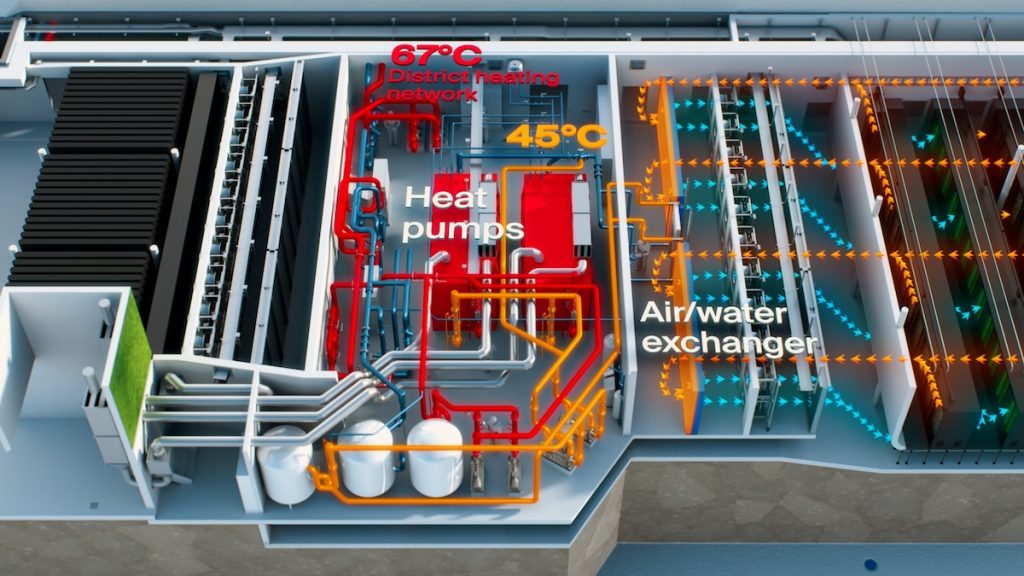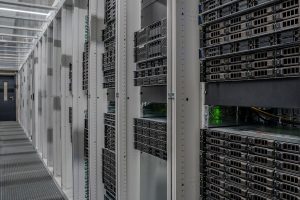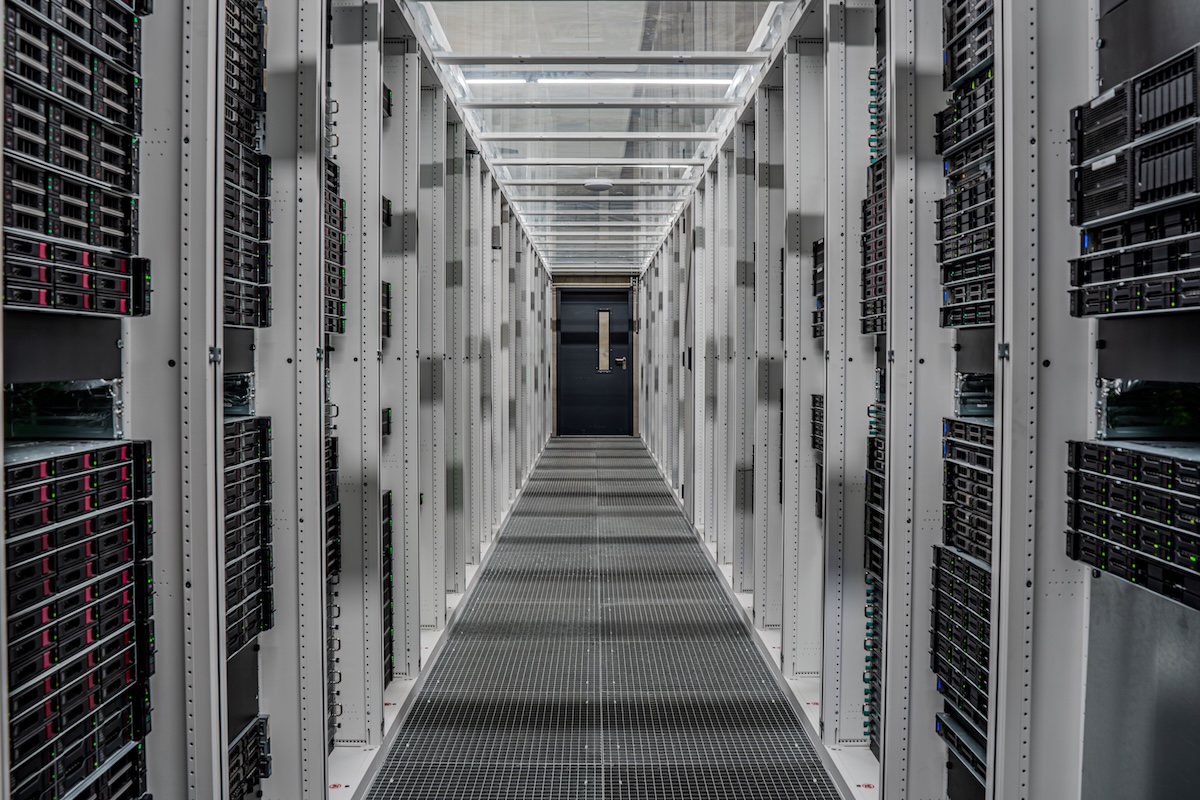1.7 MW of recovered heat can warm 6,000 homes in winter or provide 20,000 five-minute showers in summer — a scalable, circular energy model for cloud infrastructure.
Officially inaugurated in January 2025, the Infomaniak data centre in Geneva, Switzerland is located in a residential neighbourhood, this underground facility — built beneath a 150-apartment eco-district — has no visual impact on the landscape. Powered entirely by locally sourced renewable energy, it recovers waste heat and recycles 100% of the energy it consumes into usable thermal energy.
This project marks a key step in transforming a traditionally energy-intensive facility into an active example of circular energy use.

Designed to accommodate around 10,000 servers at full capacity in the 1800m2 basement area of a residential neighbourhood, the data centre operates with a high-performance waste heat recovery system enabled by Trane XStream RTWF heat pumps. This technology plays a crucial role in recovering and converting the low-temperature heat energy emitted by servers, inverters, ventilation, and other elements of the data centre infrastructure into a valuable resource for the nearby community. The use of heat pumps allows Infomaniak to utilise energy that would otherwise be wasted, enabling them to supply the recovered thermal energy to the city’s district heating network, enough to heat around 6,000 Minergie-A homes in winter or provide daily five-minute showers for 20,000 people in summer.
Turning digital power consumption into community heating
All the electricity consumed by servers, inverters, ventilation, and other components is entirely converted into low temperature heat, which is then boosted by Trane heat pumps and injected into the canton’s district heating network, providing hot water for thousands of households year-round. At full capacity the data centre generates an estimated annual output of 1.7MW or 14.9GWh. By using energy that would otherwise be lost, the system helps avoid the combustion of 3600tCO2eq of natural gas or 5500tCO2eq of pellets per year. This also eliminates more than 200 heavy vehicle trips annually to transport the pellets, further reducing emissions and particulate pollution associated with vehicle fuel combustion.
Infomaniak has documented the full operation of this world-first innovation in open source, in collaboration with EPFL, IMD, and the University of Lausanne, as part of the E4S program on the website d4project.org
High-Performance heat recovery system
Infomaniak’s data centre cooling system operates without traditional chillers, relying instead on two modes that eliminate the need for conventional mechanical cooling and reduce environmental impact.
In normal mode, the heat generated by the servers is captured and upgraded by heat pumps, then fed into the district heating network. The cold released during this process is used to cool the servers, creating a highly efficient, circular energy system.
In backup mode, if the heat pumps are temporarily inactive (for example, when the heating network cannot absorb the recovered energy), the system switches to direct free cooling using filtered outside air — with no active cold production involved.
At the heart of the energy recovery system are two Trane RTWF heat pumps, which raise the temperature or recycled low-grade server-heat from 45°C to 67°C in summer and up to 85°C in winter. This temperature range is required to match the specifications of the local district heating operator (Geneva’s Industrial Services – SIG).
Prior to installation at the site, the Trane heat pumps have been tested and performance-validated under laboratory conditions at Trane’s laboratory in Charmes, France.
Environmental Integration and Future-Ready Design
In addition to Power Usage Effectiveness (PUE), the company advocates for Energy Reuse Effectiveness (ERE) and Energy Reuse Factor (ERF), which account how much energy is reused outside the facility.
 Infomaniak’s founder and strategic director Boris Siegenthaler emphasises, “Today, PUE is no longer sufficient in the face of the climate emergency. We must also consider ERE and ERF, which provide a more complete picture of how effectively energy is reused, for example to supply heat to which evaluates the energy actually consumed compared to that reused, and ERF, which measures the share of the total energy of the data centre reused for other uses, such as district heating. Together, these three indicators provide a more complete picture of true energy efficiency of digital infrastructures.”
Infomaniak’s founder and strategic director Boris Siegenthaler emphasises, “Today, PUE is no longer sufficient in the face of the climate emergency. We must also consider ERE and ERF, which provide a more complete picture of how effectively energy is reused, for example to supply heat to which evaluates the energy actually consumed compared to that reused, and ERF, which measures the share of the total energy of the data centre reused for other uses, such as district heating. Together, these three indicators provide a more complete picture of true energy efficiency of digital infrastructures.”
Currently operating at 25% capacity, the data centre is expected to reach full operational capacity by 2028 and continue its heat supply for at least two decades.
Lauri Salmia, Applied Portfolio Manager at Trane summarises, “With the exponential growth of cloud services, the volume of waste heat generated by data centres is increasing rapidly. This energy must be reused rather than lost. Leveraging existing technology, connecting these installations to district heating networks, and designing them with thermal recovery in mind, is essential. The Infomaniak site in Geneva demonstrates a model that can influence cloud infrastructure developments worldwide, proving that performance and sustainability can go hand in hand.”




